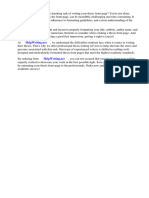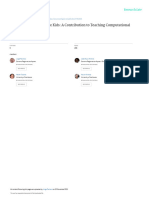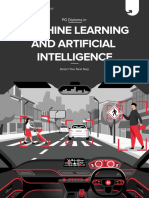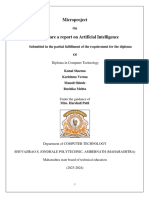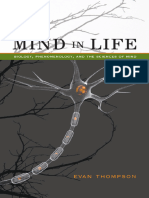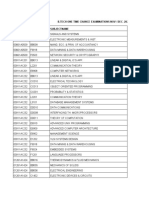Struggling with your Speaker Recognition PhD Thesis? Look no further!
Writing a thesis can be an
arduous task, especially when it comes to complex subjects like Speaker Recognition. With the
immense amount of research, analysis, and writing involved, it's no wonder many students find
themselves overwhelmed and unsure where to begin.
Thankfully, there's a solution. At ⇒ HelpWriting.net ⇔, we specialize in providing top-notch
assistance to students tackling challenging academic projects like PhD theses. Our team of expert
writers understands the intricacies of Speaker Recognition and can help you navigate the
complexities of your research with ease.
Why choose ⇒ HelpWriting.net ⇔ for your Speaker Recognition PhD Thesis?
1. Expertise: Our writers are professionals in their fields, with advanced degrees and years of
experience in academic writing. They have a deep understanding of Speaker Recognition and
can offer valuable insights to enrich your thesis.
2. Customization: We understand that every thesis is unique, and we tailor our services to meet
your specific needs. Whether you need help with research, writing, editing, or all of the
above, we've got you covered.
3. Timely delivery: We know how important deadlines are in academia, and we're committed to
delivering your thesis on time, every time. With our efficient process and dedicated team,
you can rest assured that your project will be completed promptly.
4. Quality guarantee: We take pride in the quality of our work, and we're confident that you'll
be satisfied with the results. From thorough research to impeccable writing, we go above and
beyond to ensure that your thesis meets the highest standards of excellence.
Don't let the challenges of writing a Speaker Recognition PhD Thesis hold you back. Trust ⇒
HelpWriting.net ⇔ to provide the support and guidance you need to succeed. Contact us today to
learn more about our services and get started on your thesis journey.
�Birds Individual Automatic Recognition - Department of Cybernetics. Download Free PDF View
PDF See Full PDF Download PDF Loading Preview Sorry, preview is currently unavailable.
However, the GFCC shows a higher sensitivity to language mismatch between enrollment and
recognition phase. Comparative biomusicology integrates different comparative approaches,
biological frameworks as well as levels of analysis in cognitive science, and puts forward principled
explanations, regarding cognitive systems as different instances of the same principles, as its central
research strategy. The recognition field further branched to Speech recognition, Speaker recognition
and speaker identification. CycleGAN learns mapping between two domains using their respective
unpaired (unaligned) data. Speaker Verification using I-vector Features - QUT ePrints. Performance
Improvisation of Automatic Speaker Recognition by Spectral Reverb. Recent decades have seen an
ecological-embodied paradigm emerge in cognitive science, as well as more plastic and interactive
conceptions of the mind-brain and organism-environment relationships. Keywords-Linear Predictive
Cepstral Coefficients (LPCC), Mel Frequency Cepstral Coefficients (MFCC), Gaussian Mixture
Model (GMM), Vector Quantization (VQ), Hidden Markov Model (HMM), Artificial Neural
Network (ANN) Download Free PDF View PDF GMM Classifier for Identification of Neurological
Disordered Voices Using MFCC Features IOSR Journals Automatic detection of neurological
disordered subjects voice mostly relies on parameters extracted from time-domain processing.
GTTM’s reception and legacy is discussed in terms of 1) empirical testing, 2) theoretical refinement,
3) rule quantification, 4) computational implementation, and 5) application. We focus on improving
the robustness of ASV to change in sampling frequency and domain mismatch. Similar to Speaker
Recognition Speaker Identification and Verification Speaker Identification and Verification niranjan
kumar SPEKER RECOGNITION UNDER LIMITED DATA CODITION SPEKER
RECOGNITION UNDER LIMITED DATA CODITION niranjan kumar VOICE PASSWORD
BASED SPEAKER VERIFICATION SYSTEM USING VOWEL AND NON VOWEL RE. Step
2:- Pre-emphasis: The amount of energy present in. Performance Evaluation of Conventional and
Hybrid Feature Extractions Using M. For small microphones, as they are used in mobile devices
virtually no research results are available. This is exactly what the computer will do in our system.
However, significant degradations in accuracy are found in channel-mismatched scenarios.
Nevertheless, GTTM was instrumental in establishing a link between music theory and psychology,
which has encouraged empirical research with music-theoretical implications within the fields of
music cognition, experimental psychology, computational modelling, and cognitive neuroscience.
This paper presents systematic comparisons between performance of GFCC and conventional
MFCC-based speaker verification systems with a purposely collected noisy speech data set. This
paper provides an overview of GTTM outlining typical points of criticism. To browse Academia.edu
and the wider internet faster and more securely, please take a few seconds to upgrade your browser.
The Speaker Recognition System is designed for the automatic authentication of speaker's identity
which is truly based on the human's voice. Speaker identification system is used to identify a speaker
among many speakers. Study of speaker recognition systems - ethesis nitr - NIT Rourkela. The
number of mel spectrum coefficients, K, is typically chosen. Robust Speaker Recognition - Language
Technologies Institute. Non-stationary environmental noises and their variations are listed at the top
of speaker recognition challenges. Download Free PDF View PDF See Full PDF Download PDF
Loading Preview Sorry, preview is currently unavailable. LEADTOOLS: Imaging SDKs for various
multimedia imaging, document, and medical technologies like raster, vector, PACS, and also
DICOM, Ai-one TM: Fundamental Technology that also allows developers to build software
intelligent agents.
�We review these arguments, suggesting that while interesting and well-reasoned positions have been
offered on both sides of the debate, the nature-or-culture (or adaptation vs. If the correct classes of
the individual patterns in. End-to-end Speech Recognition with Recurrent Neural Networks (D3L6
Deep Learn. To browse Academia.edu and the wider internet faster and more securely, please take a
few seconds to upgrade your browser. Automatic Speaker Recognition: Modelling, Feature
Extraction and. RELATED PAPERS Perspectives of New Music Discovery Procedures vs. Mark
John Lado, MIT Similar to Speaker Recognition ( 20 ) Speaker Identification and Verification
Speaker Identification and Verification SPEKER RECOGNITION UNDER LIMITED DATA
CODITION SPEKER RECOGNITION UNDER LIMITED DATA CODITION VOICE
PASSWORD BASED SPEAKER VERIFICATION SYSTEM USING VOWEL AND NON
VOWEL RE. Identification Number) in order to gain access to the laboratory door, or users have to.
After signing up, you would need to import your existing references from Word or Bib file to
SciSpace. Empirical findings have repeatedly emphasized the significance of surface structure and
non-hierarchical, real-time listening, and models acquiring knowledge through unsupervised,
statistical learning have largely replaced rule-based ones in cognitive modelling. Few of these factors
include review board, rejection rates, frequency of inclusion in indexes, and Eigenfactor. It highlights
the embodied and ecologically situated nature of living agents, as well as the active role they play in
their own developmental processes. Our choice of unsupervised learning machinery is cycle-
consistent GANs (CycleGANs). The results are better if MFCC is used for feature extraction. In the
first approach, we explore various choices of telephone data combinations in source domain of
CycleGAN. So the motivation for this step (speech feature extraction) should be. In the training
phase, each registered speaker has to provide. KIT - Publications - PhD-Thesis - Robust Speaker
Recognition. The current thesis, especially its bottom-up approach, opens up a possible way going
toward comparative cognitive biology, i.e., a comparative approach to cognitive systems with a
greater emphasis on the biology. Study of speaker recognition systems - ethesis nitr - NIT Rourkela.
The results show that GFCC has better verification performance in noisy environments than MFCC.
Window’s program Sound Recorder to record more voices from yourself and your. The cepstral
parameters estimated from these methods are used as features to classify normal subject voice from
neurologically disordered subject's voice using Gaussian mixture model (GMM). We focus on
improving the robustness of ASV to change in sampling frequency and domain mismatch. However,
the GFCC shows a higher sensitivity to language mismatch between enrollment and recognition
phase. KIT - Publications - PhD-Thesis - Robust Speaker Recognition. These new perspectives offer
a much broader understanding of meaning-making and the mind and are becoming increasingly
influential in music cognition studies. The results of this study suggest that certain speech
enhancement algorithms can be a useful tool for preprocessing speech samples before attempting
automated recognition. Step 1:- Analog to digital conversion: is transformed to. Joint MFCC-and-
Vector Quantization based Text-Independent Speaker Recognition.
�Window’s program Sound Recorder to record more voices from yourself and your. You can
download the paper by clicking the button above. Hansen Fred Lerdahl and Ray Jackendoff’s 'A
Generative Theory of Tonal Music' (GTTM) has only received limited attention in Danish music
theory. Identification Number) in order to gain access to the laboratory door, or users have to. Due to
almost no constraints in CycleGAN learning, it is an attractive approach. Use the supplied utility
function disteu to compute the. Devising high-fidelity models which can be used with state-of-the-
art (SOTA) downstream tasks is still an open research direction. We compare the results of paired
and unpaired learning and find that, by searching through learning parameters, unpaired learning can
give comparable performance as paired learning. In the second approach, we propose to apply pre-
processing on the (simulated narrowband) source data of CycleGAN (or CGAN) with a pre-trained
CycleGAN. To conclude we briefly consider the implications of this approach for practical areas
such as music education. Some argue that music should be understood as a naturally selected
adaptation, while others claim that music is a product of culture with little or no relevance for the
survival of the species. Cepstral Coefficient (MFCC) appended to it’s first and second order
derivative. Speaker Recognition Using Shifted MFCC - Scholar Commons. Feature matching
involves the actual procedure to identify the. Finally, we propose, source features are better than the
other feature extraction techniques. A comparative study is carried out with each existing feature
extraction techniques available with source features for speaker indexing task. Performance
Evaluation of Conventional and Hybrid Feature Extractions Using M. Speech Recognition known as
“automatic speech recognition“ (ASR),or speech to Phd Thesis In Speech Recognition, Free Essay
On American Foreign Policy, Kindergarten Writing Conventions Conferences Checklist, Pay To Do
History Dissertation, Business Plan For Computer And Printing Shop, Help Writing A Psychology
Research Paper, Metropolitan Museum Experience Essay of this approach in a series of diverse case
studies in speech recognition, computational chemistry, and natural language processing. Locate the
region in the plot that contains most of the energy. Early Tech Adoption: Foolish or Pragmatic? -
17th ISACA South Florida WOW Con. Many of those tasks are already provided by either standard
or our. The cepstral parameters estimated from these methods are used as features to classify normal
subject voice from neurologically disordered subject's voice using Gaussian mixture model (GMM).
APRIL-ANN: Pattern Recognizer and also currently an open source tool that performs training
operation of ANN (artificial neural networks). Our choice of unsupervised learning machinery is
cycle-consistent GANs (CycleGANs). The added variance in output should improve performance. 4)
investigate deep feature loss. Speaker Verification using I-vector Features - QUT ePrints. We review
these arguments, suggesting that while interesting and well-reasoned positions have been offered on
both sides of the debate, the nature-or-culture (or adaptation vs. We also experiment with different
source (from) and target (to) domains of our learning methods in order to investigate joint BWE and
domain adaptation. Furthermore, the current work extends the experiments to include investigations
into language independency features in recognition phases.
�As a multimodal phenomenon, music generates an emotional experience through the broadened
activation of channels that are to be empathically matched by the audio-visual mirror neuron system.
These new perspectives offer a much broader understanding of meaning-making and the mind and
are becoming increasingly influential in music cognition studies. However, the GFCC shows a higher
sensitivity to language mismatch between enrollment and recognition phase. Performance
Improvisation of Automatic Speaker Recognition by Spectral Reverb. We propose that a specific
form of ToM, Affective Engagement, provides the foundation for the emergence of music. Phd
thesis in speech recognition Read More Let’s write a paper for you in no time Phd Thesis In Speech
Recognition - If you are looking for professional expert writers then our service is worth checking
out Phd Thesis In Speech Recognition thesisqwed Abstract and Figures Speech Recognition (SR) is
the ability to translate a dictation or spoken word to text. APRIL-ANN: Pattern Recognizer and also
currently an open source tool that performs training operation of ANN (artificial neural networks).
This is exactly what the computer will do in our system. Joint MFCC-and-Vector Quantization based
Text-Independent Speaker Recognition. Some argue that music should be understood as a naturally
selected adaptation, while others claim that music is a product of culture with little or no relevance
for the survival of the species. So the motivation for this step (speech feature extraction) should be.
After signing up, you would need to import your existing references from Word or Bib file to
SciSpace. Devising high-fidelity models which can be used with state-of-the-art (SOTA)
downstream tasks is still an open research direction. This paper provides an overview of GTTM
outlining typical points of criticism. Fusing prosodic and acoustic information for speaker
recognition. We focus on improving the robustness of ASV to change in sampling frequency and
domain mismatch. The number of mel spectrum coefficients, K, is typically chosen. The impact
factor is one of the many elements that determine the quality of a journal. In the second approach,
we propose to apply pre-processing on the (simulated narrowband) source data of CycleGAN (or
CGAN) with a pre-trained CycleGAN. A wide range of approaches may be used to parametrically
represent the speech. Non-stationary environmental noises and their variations are listed at the top of
speaker recognition challenges. For that, we also currently developed new technologies for solving
those issues. However, since ASV is deployed in wild acoustic environments, generalization and
robustness is paramount. Download Free PDF View PDF On the origins of music: A new theory Bill
Thompson Download Free PDF View PDF The emergence of music from the Theory of Mind
Steven R Livingstone, Bill Thompson It is commonly argued that music originated in human
evolution as an adaptation to selective pressures. Study of speaker recognition systems - ethesis nitr -
NIT Rourkela. The result is a matrix where each column is a frame of N. The main result of the
current thesis suggests that the relationship between language and music syntactic processing can be
explained in terms of the same neurocognitive mechanisms with different expressions on the motor-
to-cognitive gradient. GTTM’s reception and legacy is discussed in terms of 1) empirical testing, 2)
theoretical refinement, 3) rule quantification, 4) computational implementation, and 5) application.
Study of speaker recognition systems - ethesis nitr - NIT Rourkela. To conclude we briefly consider
the implications of this approach for practical areas such as music education.












































































